Artist Spotlight: Bryan Koontz
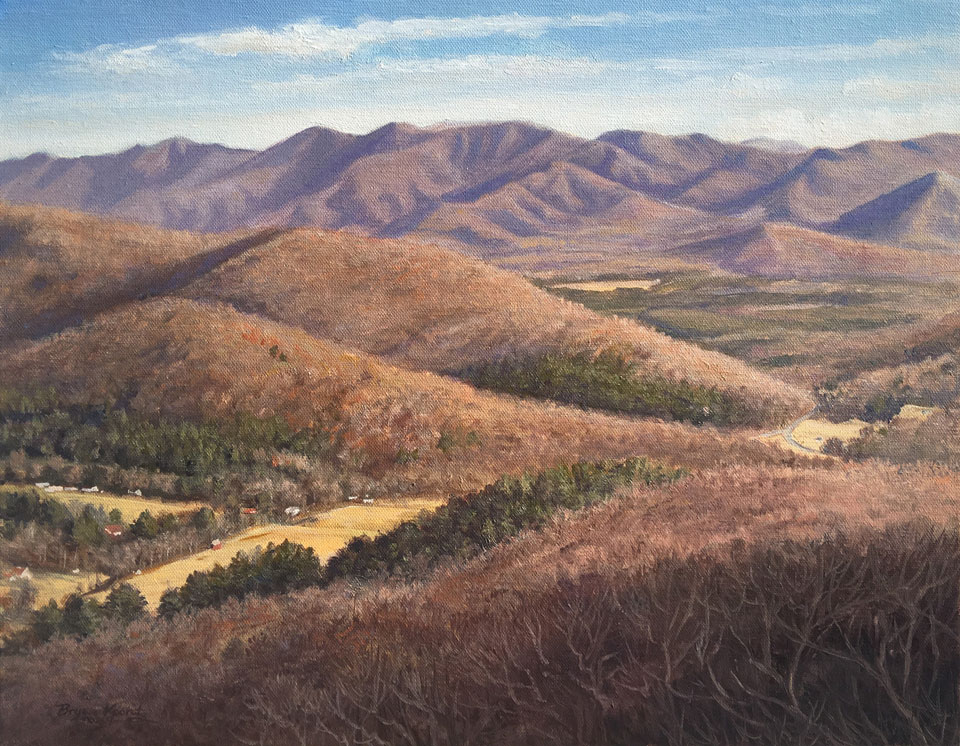
Asheville artist Bryan Koontz can date his ancestry in Western North Carolina back to the late 1700s. His deep appreciation for mountain culture, heritage, and scenery is evident in his paintings, which are often begun en plein air and finished in the studio. Employing traditional methods and archival materials, Bryan says “his aim is to produce works of art that will endure and be cherished for many generations.”
In addition to painting, Bryan has worked 30+ years in the print and graphic design industry. Notable projects include pen and ink drawings for the Mast General Store, as well as their annual Christmas card paintings and book illustrations for author Nadia Dean. In 2018, he was chosen to create the artwork for the Biltmore Estate’s Christmas wine labels.
Grovewood Gallery will host Life Along the Blue Ridge, a solo exhibition of Bryan’s landscape paintings, from February 15 through April 5, 2020. In preparation for the show, we spoke with Bryan about his journey as an artist and what inspires him to create. Read the interview below.
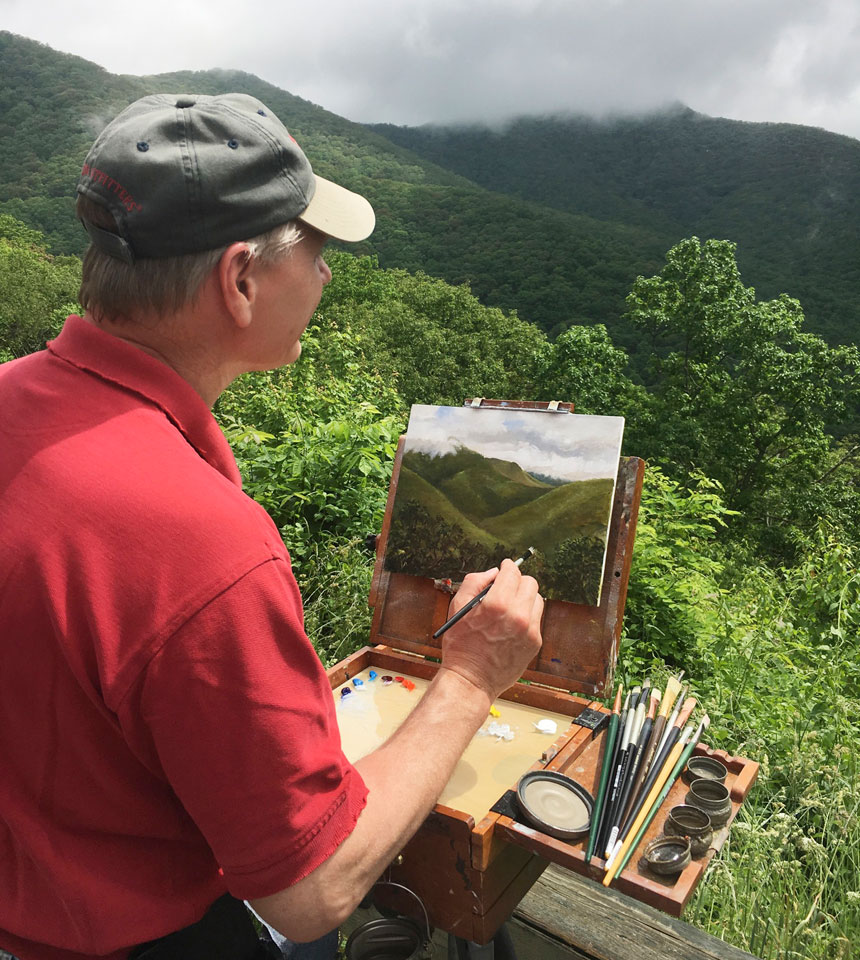
Interview with Bryan Koontz
Was there a pivotal moment when you decided to follow your path as an artist?
BK: Like most kids, I enjoyed being creative … building toys and models and drawing things. I was introduced to painting at an early age and painted with my grandmother. However, it wasn’t until I was in college that I realized I wanted to work in the arts field, whether that was in illustration, graphic design, or the graphics arts industry. I had already been working on drawing commissions and illustrations since high school and continued on with that working in my spare time. The bulk of my time, however, was spent working full-time in the graphics industry and raising my family.
I did this for many years until 2008 when the recession began. I suddenly found myself unemployed with skills that were rapidly being rendered obsolete. At that time, I concentrated on working as a freelance graphic designer, but deep inside, my greatest desire was to become an illustrator or fine artist.
I had always been drawn to great artists of the past. I was unsatisfied with the modern techniques and methods that I had been taught in college and also with my own progress as an artist. I felt that I needed to increase my skill level and knowledge in order to paint in the way the great master painters did. I wanted to find out how they painted and how they were able to create such remarkable results.
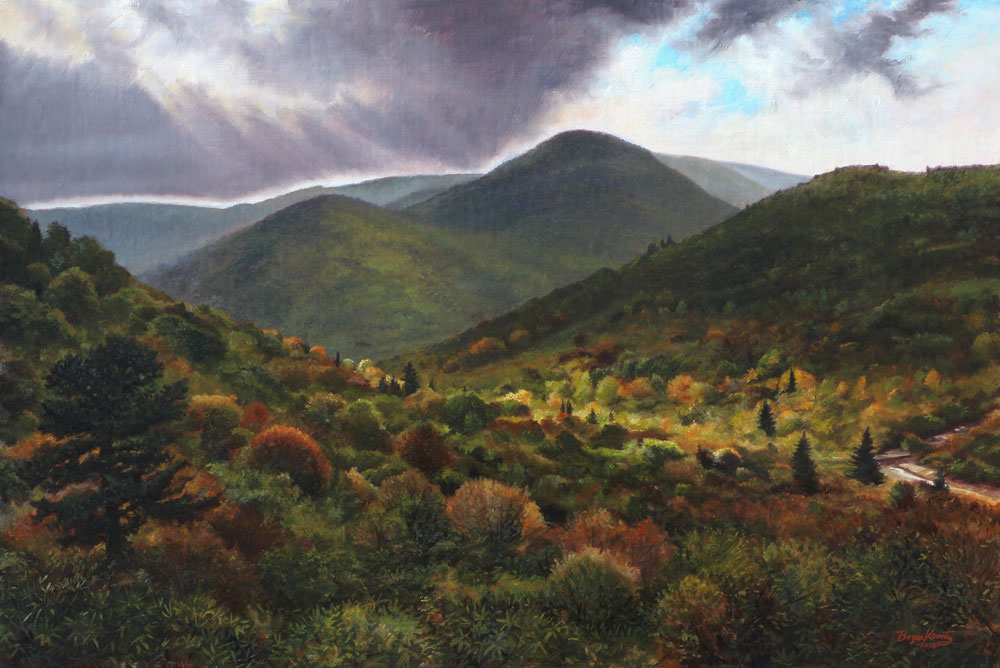
I began to study under a local master painter, John Mac Kah, and was introduced to better materials, painting techniques, equipment, and skills. I did not have the resources to study at an atelier or go to Europe, so I set about building a library of art books and studying the treasure trove of artist blogs, videos, and information found online. I was also able to get to know other artists and learn information from them.
All these experiences have added knowledge and tools that have helped propel me forward on a path toward being a better artist. Somewhere along that journey, I decided to step out and become a full-time artist.
How has growing up in Asheville influenced your work?
BK: I was very blessed to have been raised in the Asheville area, specifically, in Arden. I trekked through the woods and fields and climbed and explored the mountains that surrounded our home. I would ride my bike for hours along country roads and wade in the creek that ran through our property. I would often visit and stay with my grandparents, who lived further out in the country in Henderson County. My father would take us on hiking trips on the Appalachian Trail. My family and friends would go on camping trips in the national forests that border our region and take long drives on the Blue Ridge Parkway.
All these experiences have left an indelible mark on me. It has given me a deep appreciation for the beauty I saw all around me and helped instill a grateful heart for God, who created it all. As an artist, one could not be impacted by these experiences. They have shaped what I see as beautiful and left me with a desire to try and capture a part of them in some way on canvas.
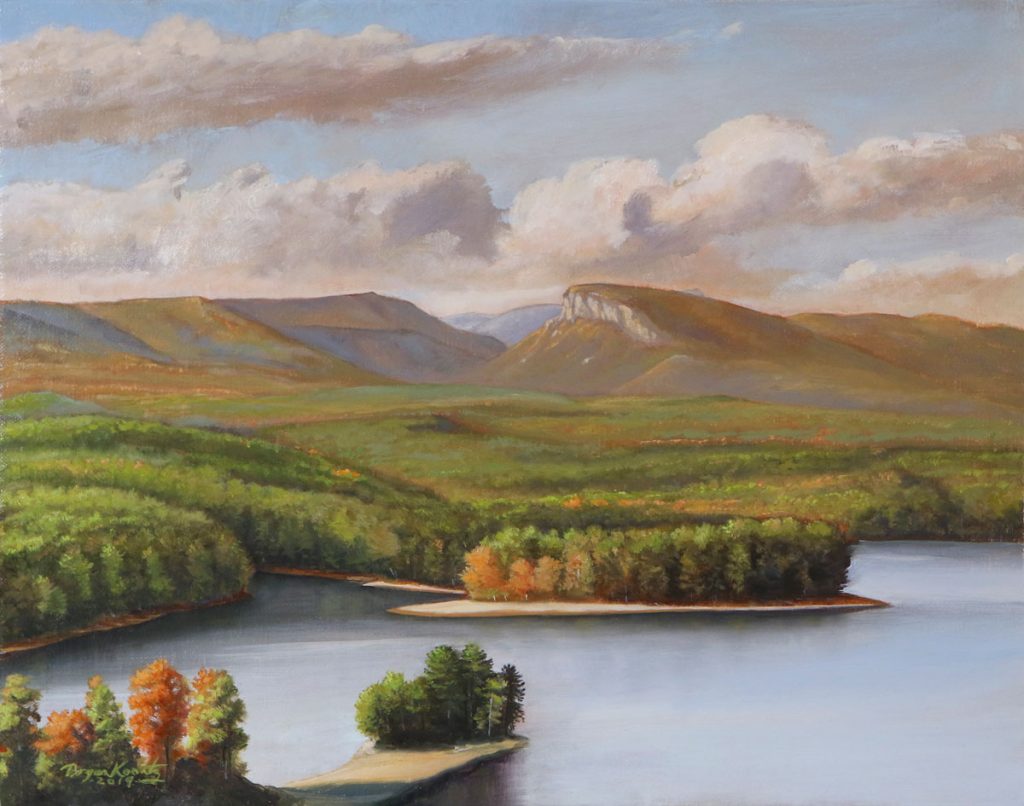
Is there a particular area in Western North Carolina that is your favorite to paint?
BK: I especially enjoy the wilderness areas and long-range views along the Blue Ridge Parkway or the great Balds that dot the mountains. Deep along rivers and creeks are also some of my favorite places. Of course, I enjoy capturing the historic rural barns and buildings that are still with us, though sadly, are rapidly fading away.
What would you like to communicate or achieve through your work?
BK: I hope to tell a story, to communicate that sense of Truth, Beauty, and Goodness that can be found in God’s creation. I hope my work can impart a sense of place or historical context, preserving what I experienced in that moment of inspiration. Joy, mostly.
Is there something about your work or creative process that would surprise most people?
BK: I think the biggest surprise for most people is about how much time it takes me to finish a painting. They don’t realize that the methods I use are very time-consuming. Of course, the larger the painting, the longer the time it takes to complete one.
Another thing they seem to enjoy is the fact that I often work on the painting or parts of the painting in the field. When people come across me working en plein air, they are curious about my gear and the materials I am using. Most always, they are very pleasant and state that they wish they could be doing that.
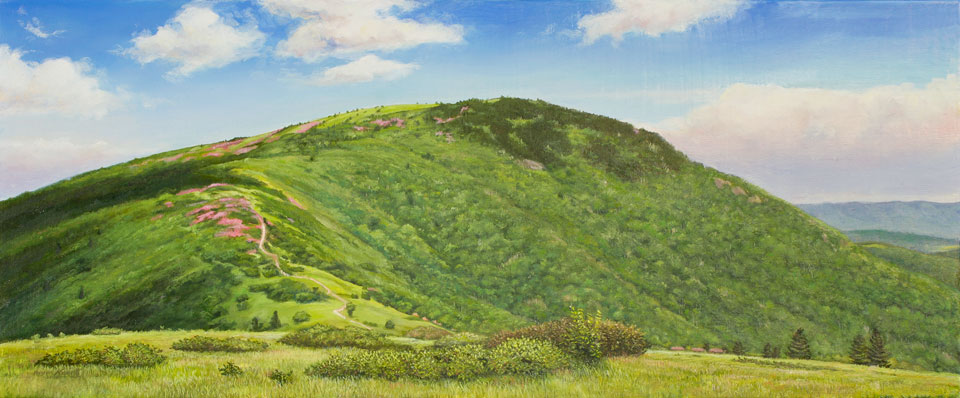
What can you not live without in your studio?
BK: Well, of course, my materials, easels, and tools. I make a lot of my panels and painting mediums. I am exploring making more of my painting materials from historic recipes and methods. I enjoy my old stereo system for listening to music. I really enjoy listening to podcasts while I am working on digital devices as well. I am often alone for many hours, so this helps with staying in contact with the outside world and often feeds the creative process.
Why do you love what you do?
BK: Each of us was given specific skill sets, talents, personal tastes, and desires. When a person can work in the same area or field where his skills and passions reside, it produces a sense of fulfillment and joy. The work is not a burden. It often produces a higher quality of work because, in essence, you are producing something that is an extension of your person. You care more about what you are creating and how well it is done. You are fulfilling what you were created to do.
I think that is why I enjoy what I do and have a love for my work. Although it is often very hard and can be discouraging, it’s fulfilling a calling. As age and needs change in my life, I think, as long as it is possible for me to hold some tools and work on something creative, I will be doing that. I may have to do other things as well, but I cannot change the fact that I was created to be an artistic person. It was from that image, the Great Artist, that I was created.
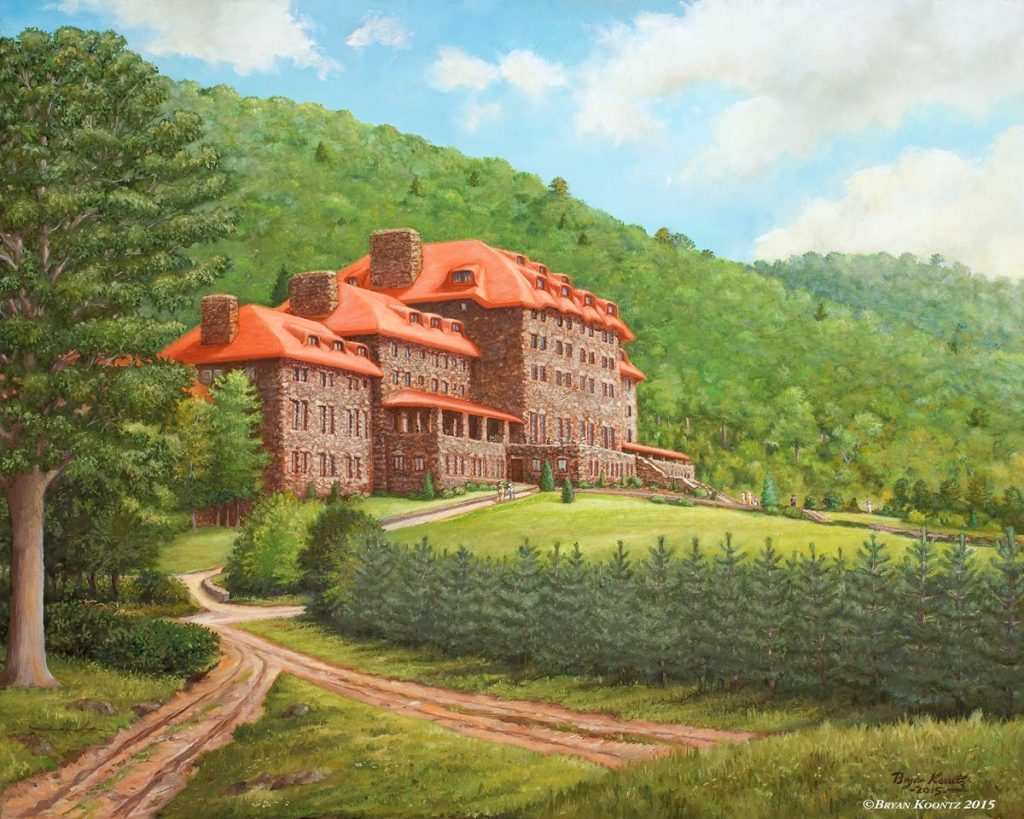
Which artist of the past would you most like to meet and why?
This is a hard question. I love to study so many of the great artists. The work that has influenced me the most can be divided into several camps.
The Hudson River artists as a whole, with some of my favorites being: Frederick Church, Martin Johnson Heade, William Trost Richards, Louis Mignot, and Thomas Moran. The Pre-Raphaelites and Romantic Era European painters such as William Holman Hunt, John William Waterhouse, James Tissot, William Bouguereau, Carl Bloch, Alphonse Mucha, Ivan Shiskin, and Philip DeLaszlo. American genre and portrait painters: Charles C. Curran, William Paxton, John Singer Sargent; and illustrators – but great artists – Howard Pyle, Norman Rockwell, Harry Anderson, and Dean Cornwell.
What draws me to these artists is their keen observation of life, their ability to convey a story, and their lifelong devotion to their craft. I find them to be worthy teachers and instructors, and I am working hard to emulate their example as I craft my own body of work.



